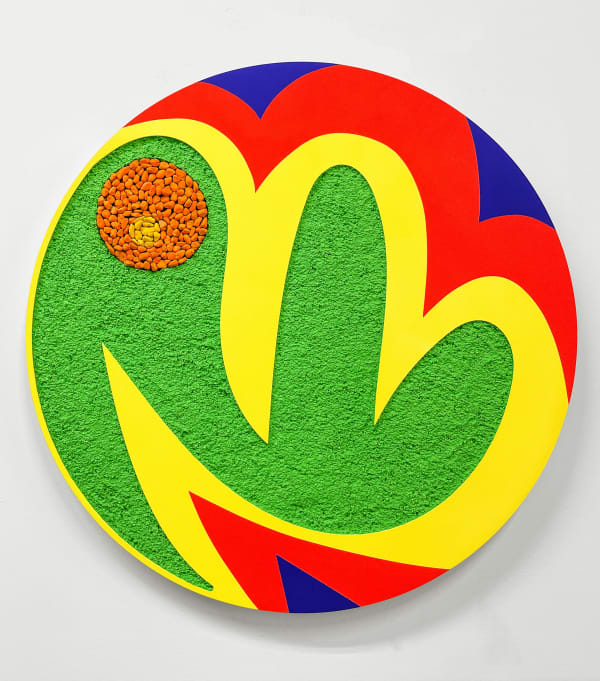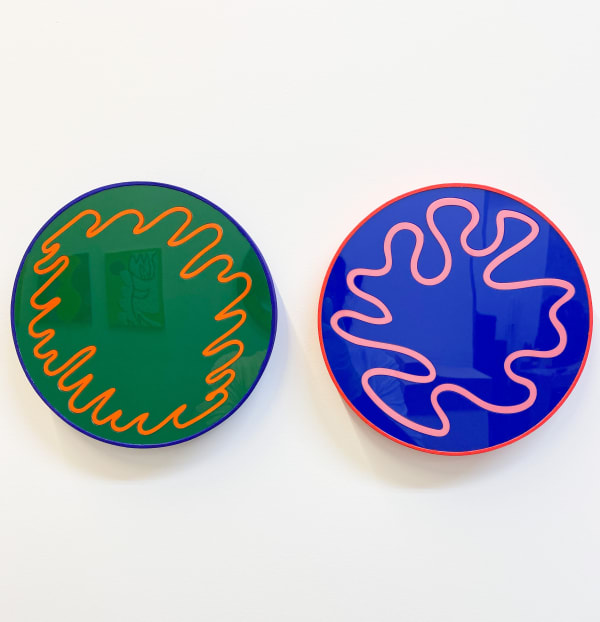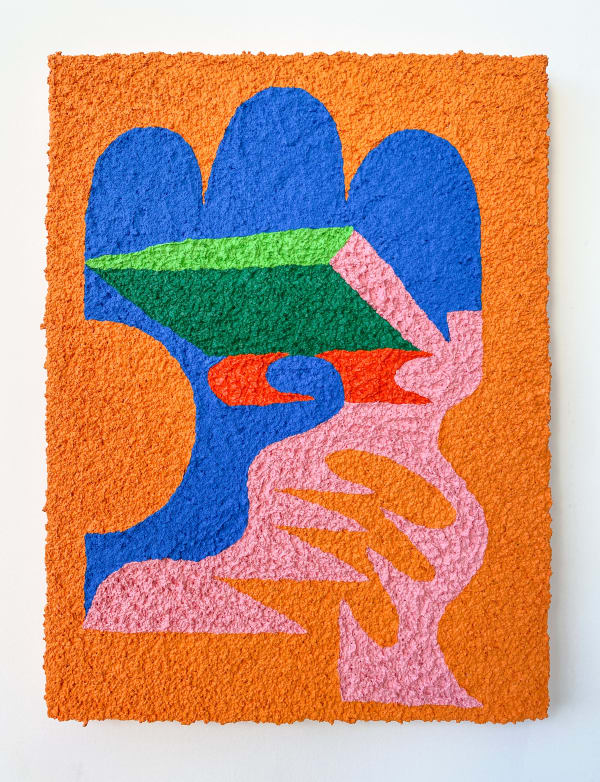-
Carlos Rosales-Silva: Sunland Park
-
Ruiz-Healy Art, New York, is delighted to present Carlos Rosales-Silva's first solo show in NYC. A recent MFA graduate from New York City’s School of Visual Arts and a participant in Brooklyn’s Residency Unlimited Program, Rosales-Silva uses an abstract approach to explore the complex identity of the ever-expanding histories of Brown people in the United States. The exhibition, titled Sunland Park, opens on January 27th, 2021, and will be on view until March 27th, 2021.
The title of the exhibit, Sunland Park, hails from the artist’s childhood neighborhood in El Paso, Texas. Named after the local 1950 racetrack, the city of Sunland Park was formed in the 1980s when three neighboring townships incorporated and adopted the name of the racetrack. Sunland Park is home to Mount Cristo Rey, a regional catholic pilgrimage site, and various Indigenous Peoples such as the Tiwa, Manso, and Piro. More recently, the city was thrust into national attention as a highly contested site of the Trump administration’s controversial border wall project. To the artist, Sunland Park provides a contextualization of his own work.
Starting with a concrete source of inspiration such as Mexican stucco construction or hand-painted, plexiglass signs, the work becomes abstracted as the artist moves further away from the source. It is then recalled by color, texture, and line to form an object endowed with layers of significance.
-
 Carlos Rosales-SilvaDiablo en el Jardin, 2019
Carlos Rosales-SilvaDiablo en el Jardin, 2019Crushed stone, acrylic paint, and acrylic plastic on custom shaped panel
43 x 29"
109.2 x 73.7 cm
-
 Carlos Rosales-SilvaLa Pulga, 2019
Carlos Rosales-SilvaLa Pulga, 2019Dyed stones, acrylic paint, and acrylic plastic on custom shaped panel
22 x 20"
55.88 x 50.8 in -
-
 Carlos Rosales-SilvaFuego en el Cielo, 2019
Carlos Rosales-SilvaFuego en el Cielo, 2019Dyed stones and acrylic paint on custom panel
23 x 21"
58.42 x 53.34 cm -
 Carlos Rosales-SilvaBorder Exchange, 2020
Carlos Rosales-SilvaBorder Exchange, 2020Sand in acrylic paint on panel
18 x 14 in
45.72 x 35.56 cm -
 CARLOS ROSALES-SILVABORDER EXCHANGE STUDIES, 2020Sand in acrylic and flashe paint on panel10 x 8"25.4 x 20.32 cm
CARLOS ROSALES-SILVABORDER EXCHANGE STUDIES, 2020Sand in acrylic and flashe paint on panel10 x 8"25.4 x 20.32 cm -
Installations and Murals
By Risa Puleo"Born into a family of carpenters and welders, Carlos Rosales-Silva grew up surrounded by the brightly colored street paintings of a previous generation of Chicano muralists in the El Segundo Barrio of El Raso, Texas, a neighborhood that has been described as an "outdoor museum of the border proletariat." Rosales-Silva marries his family's trade as builders and craftspeople to the Chicano mural tradition by incorporating the grit and texture of stucco and plaster walls into the surface of his abstract paintings, transforming the wall from a support surface to a plane for painting. Murals were adopted by the Chicano Movement from the Mexican muralists David Alfaro Siqueiros, Diego Rivera, and Jose Clemente Orozco, who were themselves influenced by the public accessibility of fresco paintings in churches of the Italian Renaissance and colonial Latin America. Like prints and posters, the other forms employed by Chicano artists from the 1960s to the 1990s, murals were accessible to all who engaged with the public sphere, and they functioned as pedagogical tools for teaching community values. Murals also brought communities together to participate in their making, as evidenced by the long history of youth programs centered around mural production in Brown communities in Texas, California, and Illinois. In recent years, murals in El Segundo, like some in the Pilsen neighborhood of Chicago and San Francisco's Mission District, as well as those that dot the cityscape of Los Angeles, have been destroyed by gentrification and the homogenized tastes of condominium living. Some of Rosales-Silva's paintings speak directly to the destruction of these murals."
From "Monarchs: Brown and Native Contemporary Artists in the Path of the Butterfly", The Museum of Contemporary Art, 2018
-
About the Artist
Carlos Rosales-Silva is an artist and educator working and living between New York, NY, and El Paso, Texas. His works are grounded in a practice of painting but often borrow from sculptural and installation methods, existing in the spaces between classification. For the last decade, his studio has focused on research and mediation on the increasing histories of Brown people in the United States. The artist’s works are abstract acts of personal discovery that reveal meaning long after they are completed. In this sense, they are non-textual communications, a meditative and slow way of processing knowledge. In 2018 Rosales-Silva was an artist in residence at Artpace, San Antonio and he is now the Abrons Art Center, New York, NY Visual Artist AIRspace Resident. His artwork has been part of various exhibitions throughout Texas and the United States, including Artpace, San Antonio, TX; Sadie Halie Projects, Minneapolis, MN; MFA Brown Art, Governors Island, NY; and Bemis Center for Contemporary Art, Omaha, NE.
Sunland Park: New York City
Past viewing_room














